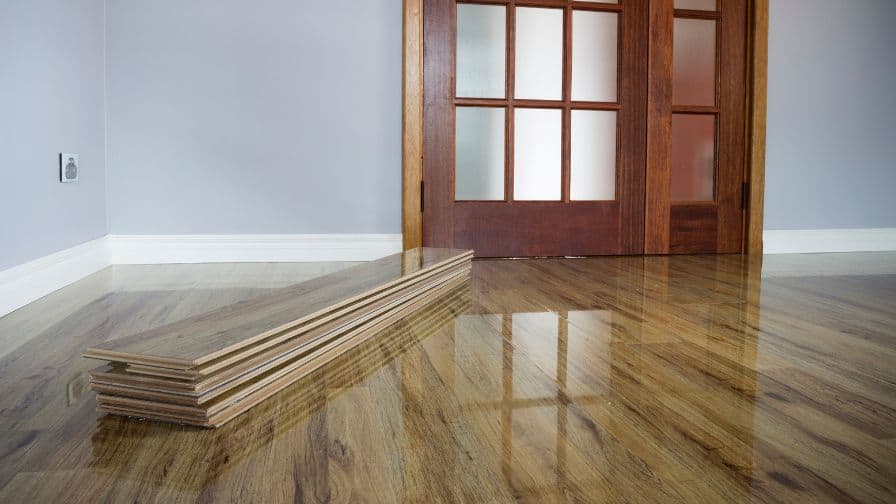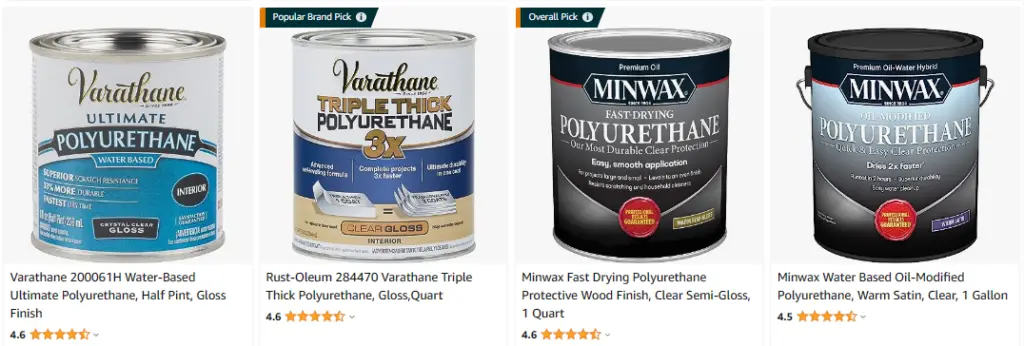
Polyurethane is a popular choice for floor finishes because it can give floors a shiny appearance. It is also durable and long-lasting. However, there are some things you should know before applying polyurethane to your floors.
In this blog post, we will discuss the benefits of polyurethane, as well as how to apply it properly so that your floors will look their best!

Click Here To Check The Pricing On Amazon
Does Polyurethane Make Floors Shiny?
Yes, Polyurethane is a type of resin that can create a high-gloss finish. It’s durable and easy to clean, making it a great option for busy households! When you’re thinking about giving your floors a makeover, ask your flooring professional about polyurethane as the right choice for you.
Floors are one of the first places people look when they walk into a room. So it’s important to make sure they’re looking their best! A high-gloss finish will make your floors shine and reflect light, giving the room an open and airy feel.
What Is Polyurethane And What Are Its Benefits
Polyurethane is a polymer that consists of repeating units of urethane. The latter is a molecule that contains carbon, hydrogen, and oxygen atoms.
It has many benefits. One of them is strong and durable, making it ideal for many different applications. Use polyurethane to make furniture, flooring, and even car parts. It is also resistant to chemicals and moisture, making it perfect for use in harsh environments.
Polyurethane can also create flexible foam products like mattresses and insulation. With so many benefits, it is no wonder that polyurethane is such a popular material.
Subscribe to Sal Flores 77 on YouTube
How To Apply Polyurethane Properly
Polyurethane is one of the most durable finishes you can apply to wood floors, furniture, or trim. It is also one of the most difficult to apply properly without creating bubbles, streaks, or lap marks. The key to a successful polyurethane job is in the application process. Here are a few tips on how to apply polyurethane properly.
Before you begin, make sure the surface you’ll work on is clean and free of any dirt or debris. Once the surface is ready, start by applying a thin coat of polyurethane with a foam brush. Work in small sections and brush out any bubbles as you go along. After the first coat is dry, apply a second coat using the same method. Once the second coat is dry, you’re done.
Now that you know how to apply polyurethane properly, you can finish your woodworking project with confidence! Remember to take your time for the best results.
Subscribe to erica jones on YouTube
Tips For Achieving A Shiny Finish With Polyurethane
When applying polyurethane, always remember these tips for best results:
– Brush in the direction of the grain to avoid streaks.
– Work in a well-ventilated area, and wear a respirator mask if possible.
– Polyurethane can apply with a brush or a roller, but using a brush will give you the smoothest finish.
– Allow plenty of drying time between coats.
– Follow the manufacturer’s instructions for how many coats to apply.
– For an extra shiny finish, you can apply a final coat of wax after the polyurethane dries completely.
– Use a natural bristle brush for oil-based polyurethane and a synthetic brush for water-based.
– When you’re using water-based polyurethane, clean your brushes with soap and water. For oil-based polyurethane, mineral spirits will do the trick.
– Applying a few thin coats is better than one thick coat.
– When you do end up with streaks, you can try wet sanding the area lightly and then reapplying the polyurethane.
– Always test your finish in an inconspicuous spot before proceeding with the entire surface. This will help you gauge the color, and sheen, and make any necessary adjustments.
– When you’re working with a large surface, consider renting a paint sprayer for a professional-looking finish.
– Remove all dust from the surface before applying polyurethane by vacuuming or wiping it down with a damp cloth.
– When you’re planning to stain the surface before applying polyurethane, do it now.
– Allow the stain to dry completely before proceeding.
– When you’re ready to apply polyurethane, stir it thoroughly first.
– Pour some of the finish into a tray and dip your brush in, or pour it directly onto the surface using a roller.
– Start in the corner of the room and work your way out.
– Smooth out any bubbles as you go along.
– When you’re finished, clean your equipment with mineral spirits or soap and water and allow the surface to dry completely.
– Once it’s dry, enjoy your newly refinished surface!



